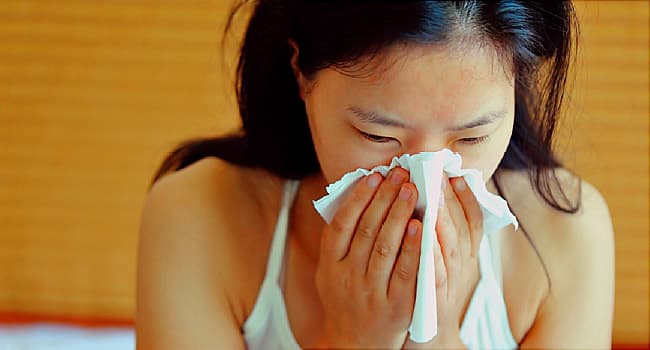A runny or stuffed-up nose is a pain, but that extra mucus helps your body stay healthy.
“Mucus is an important substance the body produces to protect itself from viruses and bacteria,” says Philip Chen, MD, an ear, nose, and throat doctor at the UT Health San Antonio. “It’s sticky and traps foreign particles, which the body can then sweep out like a broom.”
It also has special proteins and antibodies that fight off germs.
Your body makes a lot of this sticky goo, even when you’re not sick. Mucus keeps parts of your body from drying out. It’s in your mouth, nose, and sinuses. It also lines many of your tissues.
“We produce 1 to 1.5 liters of mucus a day,” Chen says. “Much of it is swallowed and we don’t even know it.”
But when you aren’t feeling well, your mucus becomes a lot more noticeable.
The Many Colors of Mucus
“The healthiest type of mucus is watery and clear,” says Omid Mehdizadeh, MD, an ear, nose, and throat doctor at Providence Saint John’s Health Center in Santa Monica, CA.
Others colors it can turn are:
White. Feel a cold coming on? The stuff in your nose may get thicker and look white. It can be a sign that your body is pumping out white blood cells to fight an infection.
Green or yellow. This shade is usually a sign that you have an infection of some kind, like a cold or the flu. “The green color comes from a protein released from your inflammatory cells,” Mehdizadeh says. “It’s a toxic substance that kills germs trying to get in.”
Red or pink. If you’re sick and coughing a lot, you may notice blood-tinged mucus. This can come from broken blood vessels in your nose or throat. In some cases, it can also be a sign of cancer. Your doctor can do tests to find out the cause.
Brown or black. Dark-colored mucus can signal an infection. It’s also common in heavy smokers or people who are around smoke or coal dust at their job. This type of mucus also shows up in people with chronic lung disease. The color comes from a mix of blood and inflammation in the lungs.
White, green, or yellow mucus can clear up on its own, but if you also have a sore throat, fever, or chills, let your doctor know. They should also know if your mucus turns any other shade or is very stringy.
How to Find Relief
While your body is fighting an infection, saline or saltwater rinses will help get rid of some of your extra mucus.
A neti pot and squeeze bottle “seem to be more effective than nasal sprays or a bulb syringe,” says Andrew Kim, MD, medical director of the Allergy & Asthma Centers in Virginia.
If you make your own saline mixture, don’t use water straight from the faucet. It may have germs that make you sick if they get into your nose. Only use sterile or distilled water. “You can boil water at home to make it sterile, but cool it down before using,” Kim says.
Steam from a hot shower will thin your mucus. Make sure you drink plenty of liquids, too — that will help loosen it.
While over-the-counter decongestants may let you breathe better, “they don’t actually decrease mucus production,” Chen says.
For kids in day care or school who get a new cold every 6 to 8 weeks, saline spray and suction bulbs are the safest way to manage mucus. If your child seems very tired or has a high fever, call your doctor right away.
In the meantime, don’t think that your nose should be totally free of snot. “You never want to truly get rid of mucus,” Mehdizadeh says. “It’s extremely helpful.”








